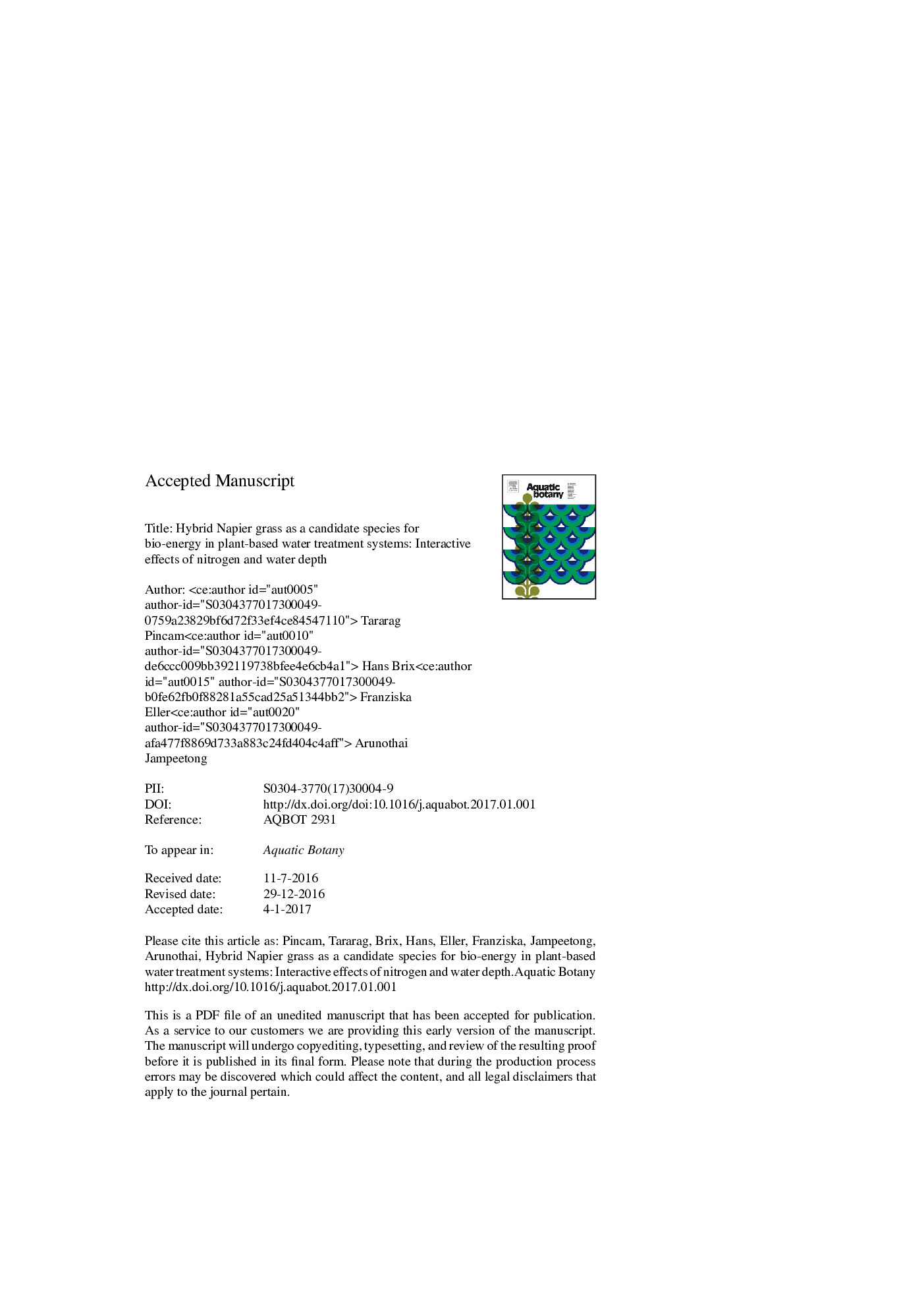| Article ID | Journal | Published Year | Pages | File Type |
|---|---|---|---|---|
| 5764062 | Aquatic Botany | 2017 | 37 Pages |
Abstract
Hybrid Napier grass (Pennisetum purpureum Schumach Ã P. americanum (L.) Leeke cv. Pakchong1) is a candidate species for use as a bio-energy crop in plant-based water treatment systems due to its high growth and biomass production rate, ease of propagation and harvesting, and the quality of the biomass. We conducted a 2 Ã 3 factorial mesocosm experiment with two levels of inorganic N (100 μM and 1000 μM) and 3 water levels (0, 10 and 20 cm depth) and monitored the plant responses in terms of growth and biomass allocation, root morphology and leaf pigment concentrations to assess how hybrid Napier grass responds to a combination of flooding and high N concentrations. Under non-flooded but saturated soil conditions, hybrid Napier grass grew well at both N concentrations, but the tissue contents of minerals and nutrients were higher when plants grew at high N concentration. At 20 cm water depth and at the low N concentration, hybrid Napier grass acclimated to the flooded conditions by producing 2.5 times longer adventitious roots from the stem nodes and containing 3 times more lysigeneous aerenchyma compared to the plants grown at non-flooded conditions. At the high N concentration, hybrid Napier grass was not able to acclimate to the flooded conditions and had chlorotic leaves and reduced growth. Hybrid Napier grass can grow both under water-saturated and flooded soil conditions (up to 20 cm water depth) while maintaining high biomass production. If N concentrations are moderate (<1000 μM), hybrid Napier grass is therefore suitable for use in integrated plant-based water treatment and bio-energy crop production systems.
Related Topics
Life Sciences
Agricultural and Biological Sciences
Aquatic Science
Authors
Tararag Pincam, Hans Brix, Franziska Eller, Arunothai Jampeetong,
